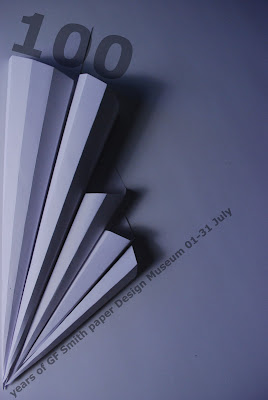Above: I have heightened the brightness and contrast levels on this design to achieve more shadowing and give a blue colour wash. I like the atmosphere of this result, I think it works well with the text effect, giving the illusion that the text is an extension of the image.
Above: I have colourised the image to give a neutral tone to it, and also try to achieve the look of paper that could be 100 years old, in contrast with the very modern paper construction and typeface. The problem with this is that it has given the background image a grainy finish, which would compromise the quality of the final print at A2. I really like this design but I feel the quality is just not good enough.
Above: I have inverted the background image, which gave the neutral colour without the grainy result, but the shadows have been turned white, which is the obvious result of inverting the image. I feel this draws away from the atmosphere of the image, as the shadows are what gave the impact. Also, the text is somewhat fighting with the background image, as opposed to complimenting it and acting as an extension of it.
After looking at the three possible options, I have settled on the first design as the text and background image work well together, and the light and shadow are well balanced. I would however, if I had longer to experiment, look into more ways of achieving the aged look without compromising on quality.























